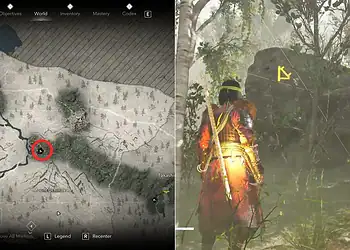Professional esports viewership has peaked at 532 million in 2024. A figure that is simply mind-boggling suggests a great deal more than entertainment consumption alone. Competitive professional gaming has become a sophisticated system where understanding player psychology, tournament structures, and strategy balances the gap between expert fans and casual viewers who watch solely for entertainment.
The transition from ambivalent spectator to knowledge-based aficionado requires systematic modes of consuming esports media. Modern platforms like bb bizbet provide analytic capabilities that allow spectators to track team performance, player statistics, and tournament outcomes with unprecedented precision. These tools transform the way people engage with competitive gaming.
Game selection remains the foundation of high-level esports engagement. Competition formats vary substantially between titles, with a few using best-of-three series while others use single-elimination brackets. Knowledge of these infrastructural variations helps fans understand the strategic depth each game represents.
What makes esports particularly compelling is the rapid pace of change within each competitive scene. Players like Faker continue to dominate after over a decade of competition, demonstrating that longevity in esports requires constant adaptation. This dynamic environment rewards fans who stay informed about ongoing developments rather than relying on outdated information.
Game selection strategies and competitive formats
Choosing which esports to watch is a matter of balancing personal preferences with reality. Different games offer different viewing experiences that will satisfy different types of viewers. Some offer constant motion and quick matches, while others have longer, more deliberate strategic battles that will be rewarded for patience and close examination.
Contemporary esports utilize different tournament structures such as double round robin, single elimination, and Swiss systems. Each of these structures provides different viewing experiences and impacts the manner in which teams prepare for matches. Knowledge of these tournament formats assists viewers to better appreciate the strategic aspect of teams during competitions.
The choice of tournament format usually hinges on pragmatic issues such as time available, number of teams to compete, and television broadcast requirements.
These are the most important formats to know:
- Round robin – Teams play against other teams at least once
- Single elimination – Teams become eliminated after losing once
- Double elimination – Teams must lose twice before they’re eliminated
- Swiss system – Teams play against each other with the same outcome
- Best-of series – A series of matches determine the winner of a match
Major events like the League of Legends World Championship and VALORANT Masters are viewed by millions of fans from various platforms. They are the culmination of competitive play in their respective titles and hence make ideal viewing points for new viewers interested in understanding each of the top-level games.
Regional leagues have more frequent viewing timetables than overseas competitions. Regional competitions help viewers better understand team development over extended periods and track the development of players over the seasons. Regional competitions provide better opportunities to find new talent early on before they hit the international stage.
Tournament formats and competitive cycles
Professional esports feature complex seasonal cycles combining regional competition and international events. The 2025 esports calendar features top-level tournaments all year round with different games featuring their signature events during different periods. This staggered approach ensures that fans can enjoy top-level competition at all times.
Understanding competitive cycles helps fans know when to look out for specific games and matches. Some tournaments are precursors to greater competitions, and some are standalone championships. This ranking has an effect on preparation tactics for teams and motivation for players.
| Tournament Type | Duration | Frequency | Importance Level |
| Regional Leagues | 8-12 weeks | Seasonal | High |
| International Events | 1-2 weeks | Quarterly | Very High |
| Major Championships | 2-3 weeks | Annual | Maximum |
| Qualifier Events | 3-5 days | Monthly | Medium |
The 2024 Esports World Cup covered 21 different games with a combined prize pool of $62.5 million, which reflected the scale and economic significance of modern esports tournaments. These multi-game events are special-viewing experiences but require unique analysis techniques compared to single-game tournaments.
Tournament bracket analysis

Bracket development determines game-viewing strategy and helps the viewer understand which games are most important. Early rounds of the tournament tend to have predetermined outcomes, but the second half of the tournament features closer games between two approximately equal teams. Sophisticated viewers put their focus on elimination games, rather than trying to watch every game that is available.
Seeding systems establish early matchups and can greatly affect tournament results. Higher-seeded teams generally play less tough opponents in initial rounds, but upsets are frequent enough to make tournaments exciting. Familiarity with seeding enables fans to recognize likely upset possibilities and underdog narratives to track.
Fans today will watch tournament activity and get notified of important games through mobile apps. Bizbet download provides an avenue to view comprehensive tools used to monitor tournaments that allow fans to stay updated with bracket news and match schedules for a number of competitive game titles.
Player analysis and star identification
Faker’s supremacy in League of Legends sets the model for what distinguishes great players from good ones. His consistency over the span of several seasons and resilience to adopt changes in the game mechanics displays the kinds of traits fans should seek out when assessing the ability of players.
Player identification involves grasping individual ability and team contribution. There are those who are statistical leaders yet fail in clutch situations, while there are others who play their best when they’re about to be eliminated. Such variations only show themselves with regular viewing and observation over a period of time.
Different team positions require different standards of measurement. Support players can have fewer statistical measures but provide essential strategic guidance, while stars are obligated to propel games by dint of individual brilliance. Being sensitive to such role distinction allows audience members to more fully enjoy the entire range of team dynamics.
Young players bring creativity and enthusiasm to veteran teams, while stability and experience come from veterans in high-stress situations. Their interaction decides the team’s performance and offers engaging storylines for audience interest over seasons.
Staying current with player roster activity and team dynamics
Roster changes occur on a daily basis in pro esports, so team monitoring is a perpetual requirement for astute audience members. Player transfers from regions to teams create new stories and shift competitiveness. They change team chemistry and strategic tendencies subtly to casual fans.
The trends of roster fluctuations between seasons are apt to mirror broader trends in competitive realms. Organizations can focus on developing young talent, acquiring veteran stars, or shifting their strategy. Fans are able to project future success for teams based on these trends.
Off-season periods provide squads with an opportunity to rebuild and address vulnerabilities exposed by previous competitions. Astute supporters observe these changes because they typically end up in squads that will fight for championships in subsequent seasons. Ignoring roster analysis limits understanding of team potential.
Player personalities and communication styles affect team dynamics in performance-impacting manners. Players thrive under high-pressure situations or in supportive environments. They are responsible for team building choices and why some player combinations fail or succeed.
Advanced statistics and performance analysis through bb bizbet tools
Modern esports analysis is greatly reliant on quantitative analysis beyond simple win-loss records. Professional teams like T1 and Gen.G demonstrate quality through many quantifiable performance measures. Fans are able to analyze team and player performance better according to these measurements than through a casual appreciation.
Performance statistics differ greatly from one game to another, and fans need to learn game-specific metrics. League of Legends fans may be interested in damage per minute and kill participation rate, while Counter-Strike fans monitor headshot percentage and clutch round wins. Every game has specific mechanics that produce different statistical priorities.
| Metric Category | League of Legends | Counter-Strike | VALORANT |
|---|---|---|---|
| Individual Skill | KDA Ratio | K/D Ratio | ACS Score |
| Team Contribution | Damage Share | ADR | First Blood Rate |
| Strategic Impact | Vision Score | Clutch Success | Spike Plant Rate |
| Consistency | Game-to-Game Variance | Round Impact | Map Win Rate |
Newer sites have live statistics for ongoing games, allowing supporters to track performance trends as they accumulate. These kinds of tools can identify players playing above or below their norm, which will generally align with match outcomes and team performance.
Cyber growth through gaming has created new opportunities for statistical analysis and fan engagement. Modern technology allows for tracking nuanced performances not possible before in mainstream sport, offering esports fans unprecedented knowledge about competitive performance.
Knowledge accumulation through social interaction and content consumption
Effective esports fandom requires an active presence in discussions and content consumption within communities. Ex-professionals, retired professional players, and proficient fans provide a level of analysis that passive watching can’t. Subscribing to such communities allows the fans to gain more sophisticated knowledge of competitive interactions.
Esports commentators who produce content have differing views on the same competitive events. Some examine gameplay in detail, while others provide analytical and strategic thought regarding team decision-making or players’ psychology. Observing different content streams enables fans to gain depth in their knowledge of competitive gaming.
Primary methods through which the community can participate:
- Tournaments watch parties – Group watching with fans with expertise
- Post-match analysis – Detailed talk-through of critical moments and plays
- Player interviews – Exclusive insight into rival opinions and intentions
- Statistical in-depth analysis – Fact-based analysis of performance trends
- Prediction games – Stretching analytical prowess against fellow fans
Social networking websites provide real-time conversation during a live event as fans post comments and share insights with other people’s perceptions. Real-time comment helps in creating faster pattern observation and recognition of finer strategy details that could be missed when viewed in isolation.
Professional broadcast talent often provides educational content that helps fans understand advanced concepts. These explanations bridge the gap between casual entertainment and serious competitive analysis, making complex strategic elements accessible to broader audiences.
Leveraging technology for enhanced viewing experiences
Current viewing platforms provide functionality that greatly enhances the esports viewing experience. Multi-camera angles, player viewpoint streams, and statistical over-lays deliver information unavailable in traditional broadcasts. Knowing how to apply these tools competently distinguishes astute fans from casual observers.
The 2025 World Cup of Esports will feature 25 events in a variety of games, so fans have to deal with complex viewing schedules and select the most important games to watch. Technology solves such problems through auto-reminders, recommended content based on personalization, and scheduling applications.
Interactive features allow viewers to participate in live chat, make predictions, and access more information without having to leave their watch location. These features allow for more immersive experiences that value active participation over passive watching.
Smartphone applications give viewers extended screen viewing access outside of television or computer screens. Live scores, highlights, and breaking news are available to fans wherever they are. This offers more frequent contact with competitive action.
Technology convergence of games and viewing platforms introduces new possibilities for fan engagement. Several platforms allow viewers to view matches from within the real game client, providing them with the chance to view matches precisely as seen by professionals while competing.
What results from structured esports viewing is an appreciation for the strategic sophistication and individual ability required in professional competition. Victory comes through careful planning, adaptive strategies, and individual brilliance in spite of adversity. These dynamics combine to create entertainment that is as much improved by casual observation as it is by intense scrutiny.
The world of esports continues expanding as new games enter competitive scenes and existing titles evolve their forms. Fans who establish solid analytical foundations find it easier to keep pace with such developments than those whose connection rests on shallow experience. Such a capacity to catch up ensures long-term appreciation of competitive gaming regardless of change individual games or competitions might experience.
Read more: Tamil Nadu Leads Women’s Factory Employment: 655,020 Jobs Across India’s Manufacturing Belt







